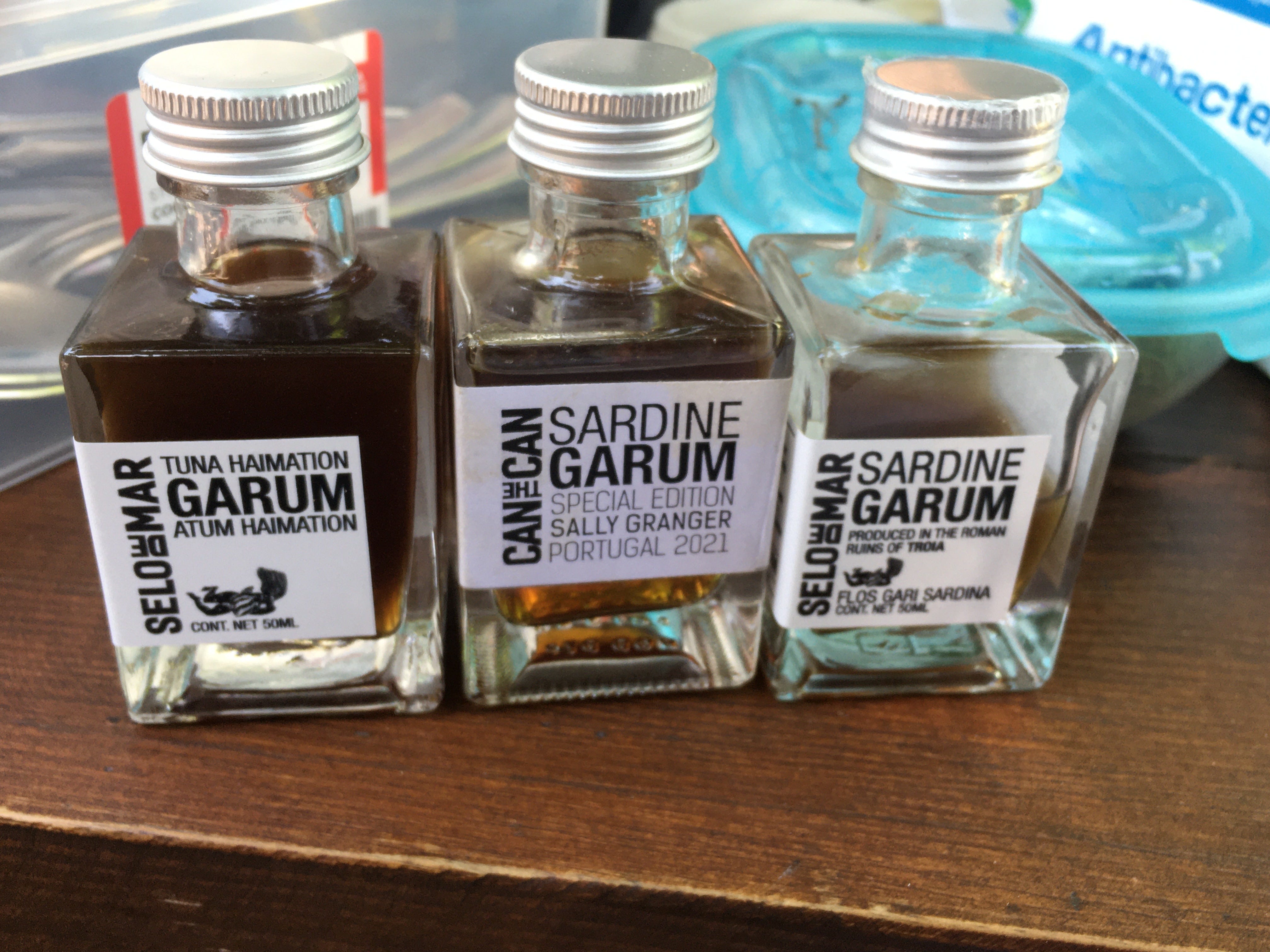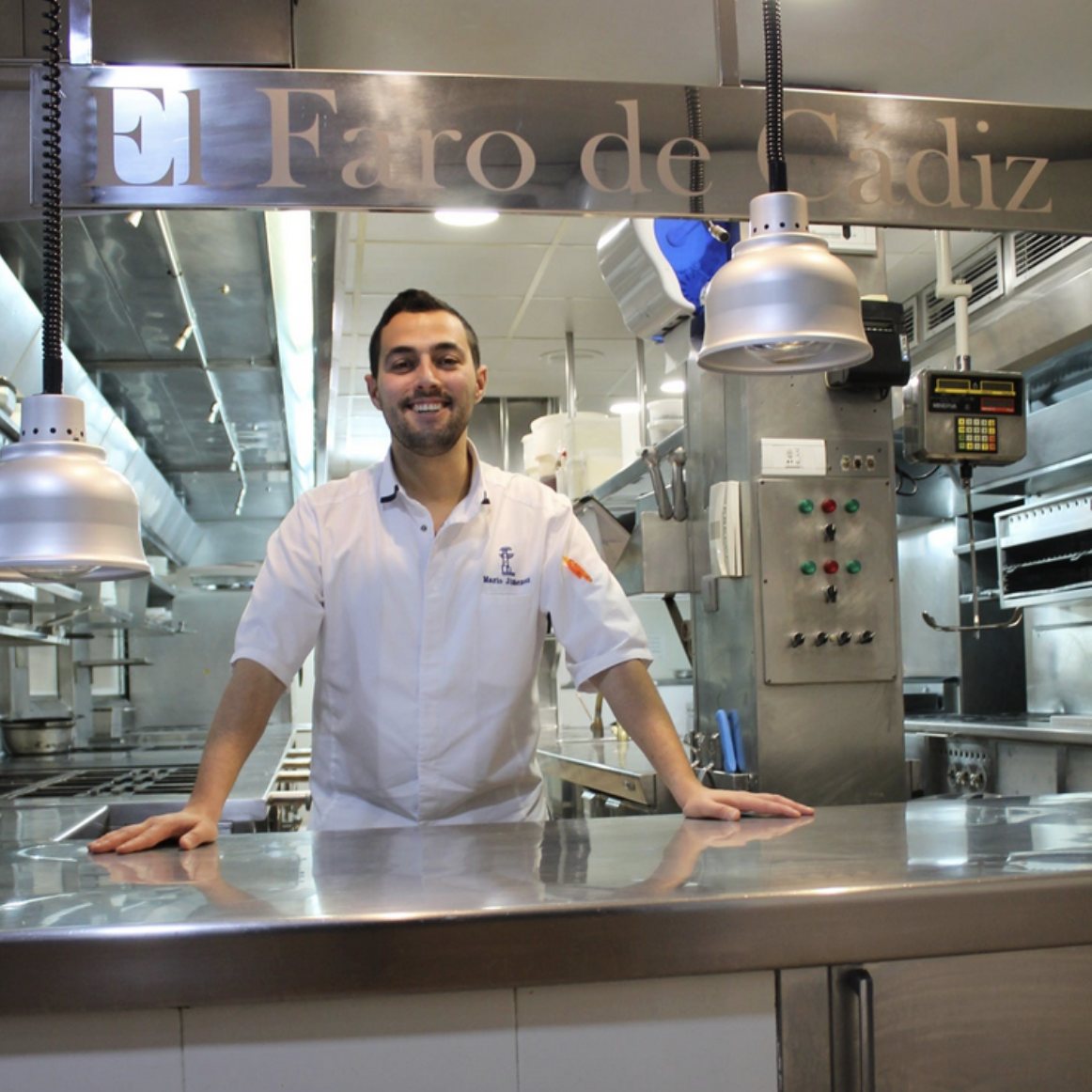The final chapter in my quest for the garum of the ancients.
// After my lunch at La Curiosidad de Mauro, where chef Mauro Barreiro had prepared a multi-course, garum-infused meal for me and my genial companion, the Scottish-born, Gadetano-by-temperament translator Tim Gutteridge, we decided to go to a restaurant whose chef took a very different approach to cooking with ancient fish sauce.
El Faro is an institution in Cádiz, a temple to seafood in a city known for great seafood. I was greeted at the door by El Faro’s young chef Mario Jiménez. I’d told him about my quest for garum, and he’d told me that he already used the Flor de Garum concocted by team at the Universidad de Cádiz extensively in his cooking. But he admitted that, inspired by the challenge, he’d lain awake the night before planning an entire tasting menu built around garum.
It was immediately obvious that Jiménez’s approach to cooking was going to be very different from Barreiro’s. He explained that El Faro was a Cádiz institution; he was the third generation to cook there. He wasn’t allowed to touch the recipe for the house specialty, tortellita de camarones—a lacy fritter of tiny, translucent shrimp that resembles an omelet with eyes—which his grandfather had made when El Faro opened as a humble waterfront tavern in 1964.
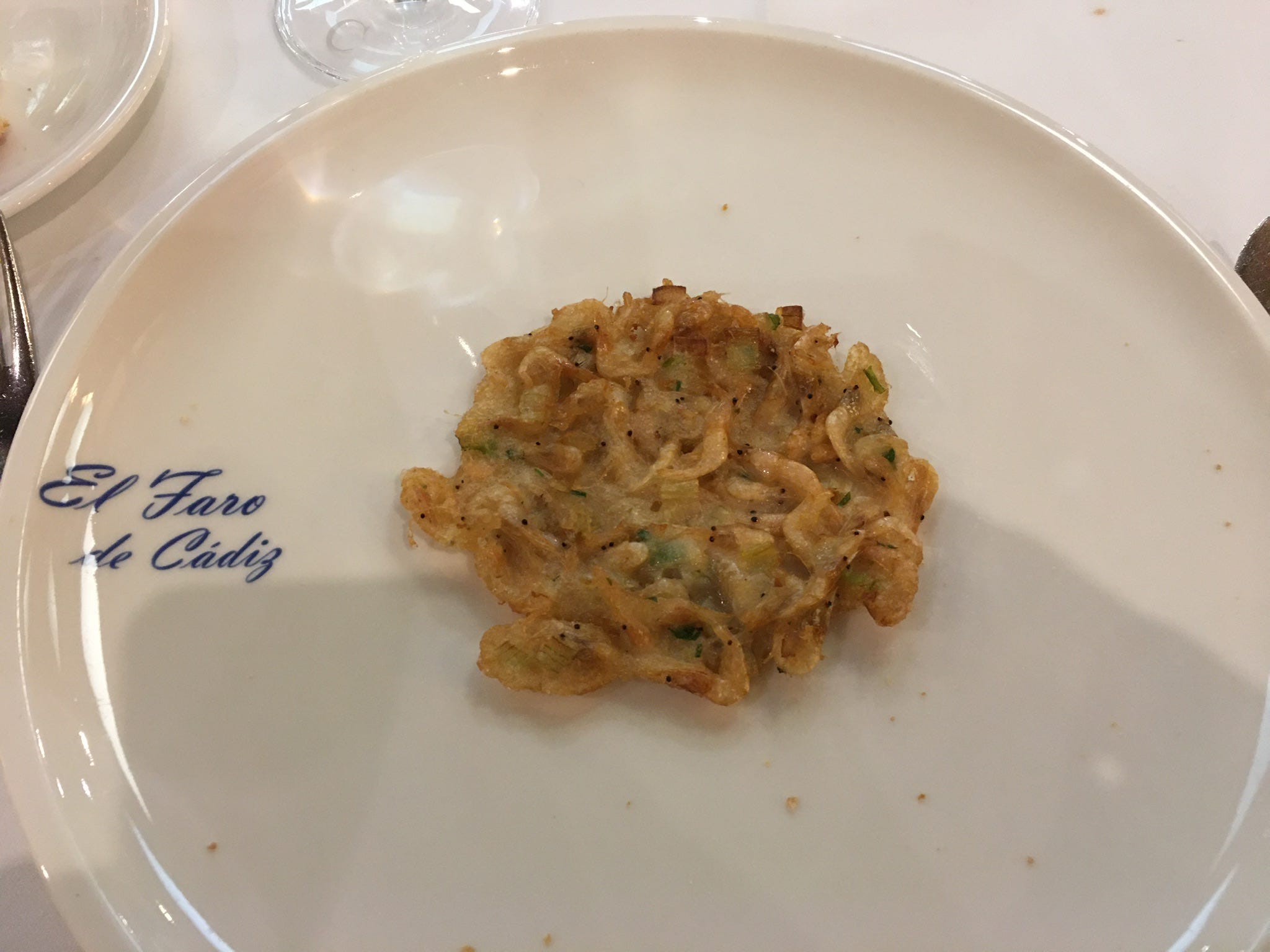
Jiménez’s training at the Culinary Institute of America, where he’d gone to study the use of seaweed in the kitchen, had actually made him more cautious about incorporating outside influences into the traditional into his cooking.
“I love Mauro so much,” Jiménez told me. “We are friends. But I don’t have any fusion food on the menu. No ceviche, no tataki, no wakame. Because wakame is not from here.” Unlike Barreiro, whose flesh was as extravagantly illustrated as a yakuza’s, Jiménez had only one tattoo on his right bicep. It was an image of a faro—Spanish for lighthouse—with the words “Just a calm evolution” inked beneath it. “When I started here, I was more radical,” he said. “Now I always try to find the balance.”
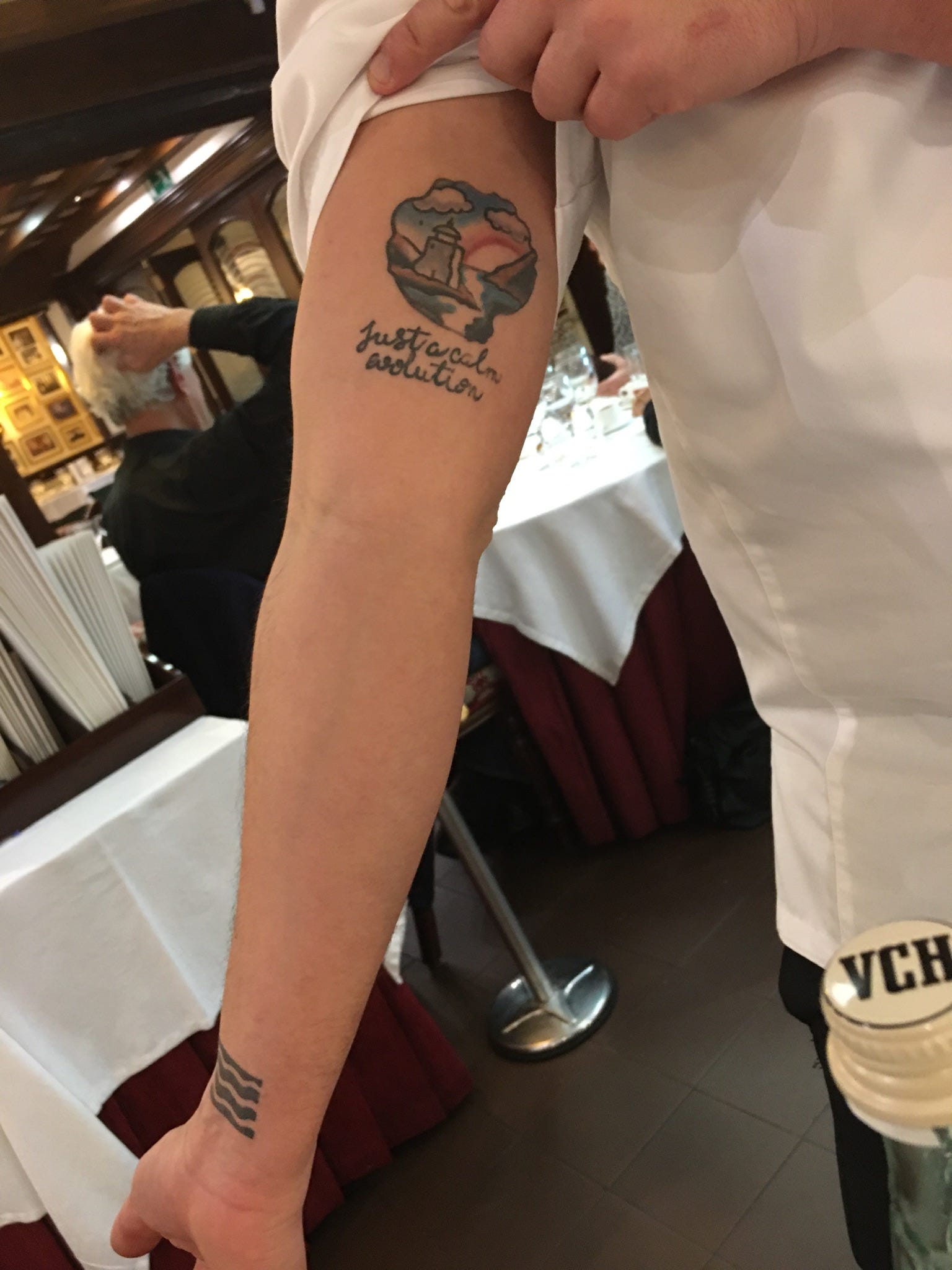
Jiménez said he considered garum part of Cadiz’s history. “I don’t use soy sauce in my kitchen any more,” Jiménez continued. “Only garum. In America, they are very concerned about salt, for health reasons. But for me, the level of salt is key to cooking. If you add soy sauce or other Asian ingredients to a cut of tuna belly, all you taste is soy sauce. With a few drops of garum, it’s a different experience.” Jiménez believed that garum was the Romans way of adding salt to food; few surviving recipes mention salt at all, while the vast majority stipulate garum in some form. “It opens your mouth to other flavors. My idea is to make people eat garum without knowing they are eating garum.”
Over the next two hours, Tim and I were treated to a spectacular tasting menu, every course of which contained Flor de Garum. It began with a single dollop of ice cream covered with shavings of black truffle, resting in a pool of extra-virgin olive oil; Jiménez invited me to try the ice cream first—it was blended with a few drops of garum, and just barely sweetened—and then mix it with the oil.
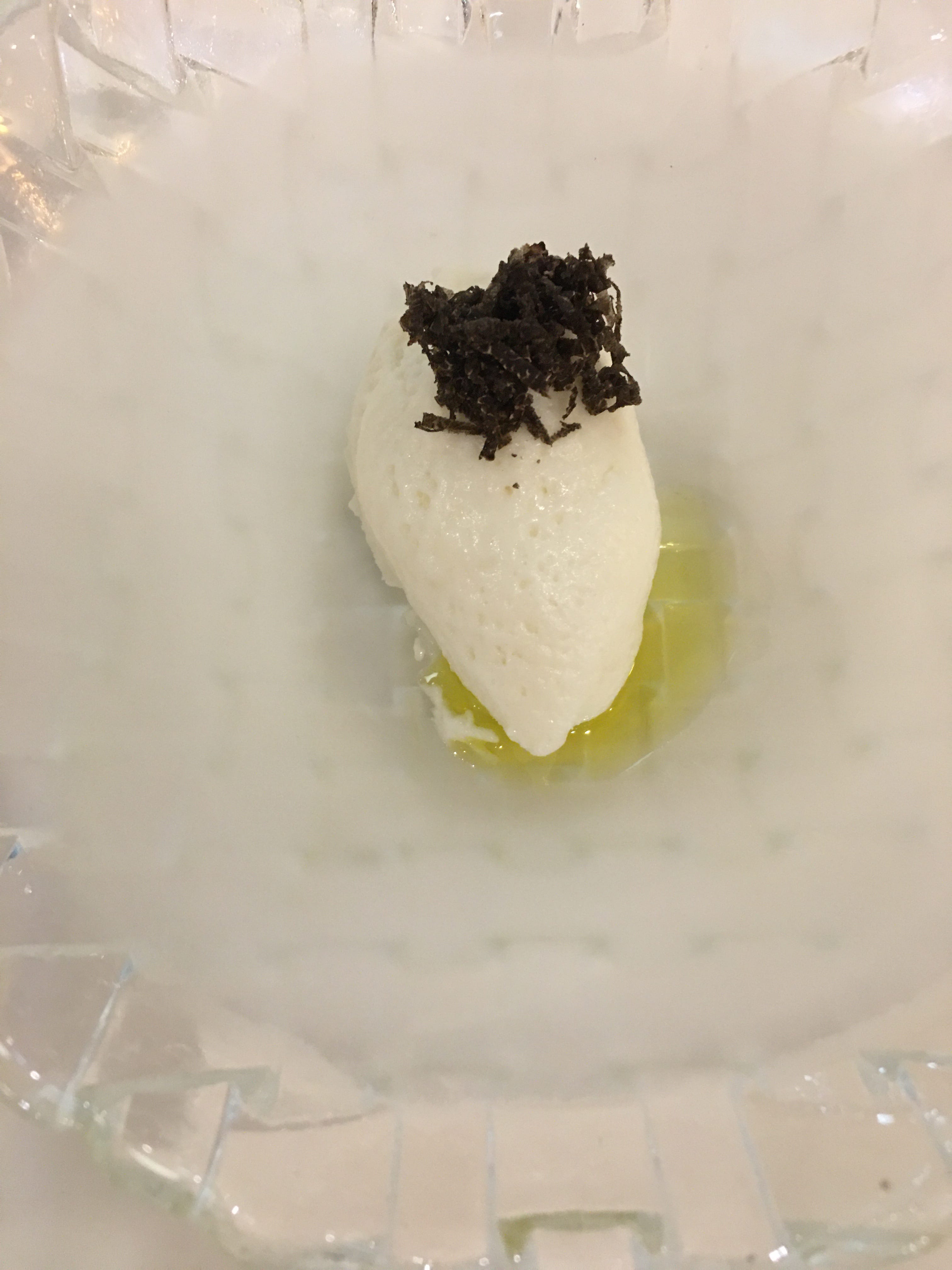
It was followed by an upturned sea urchin, spines nestled in a bed of coarse salt, whose apricot-hued roe was surrounded by a prawn tartare made with garum, from which protruded three exquisitely delicate spikes of sea asparagus.
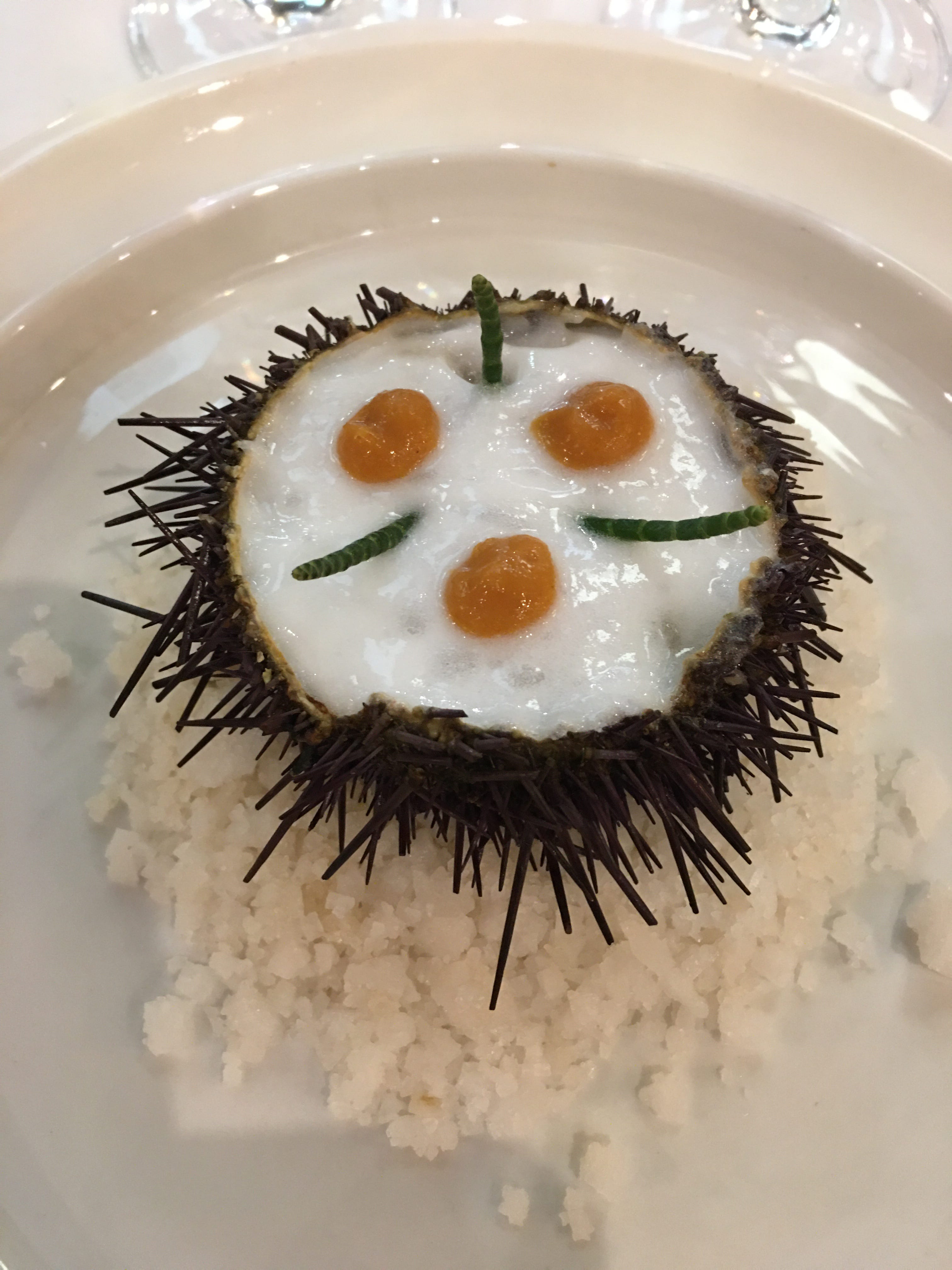
Jiménez came to the table to prepare one of his grandfather’s signature dishes, marinated sea bass with oysters. Instead of “cooking” the raw fish in lemon, like a ceviche, he let it soak for a minute or two in a bowl of oxygarum, a preparation of garum and vineger, attested to in Apicius, the collection of ancient Roman recipes.
“The vinegar in the oxygarum changes the color,” he said, showing me how the acidic marinade had whitened the sea bass loins, which he then laid atop a tartare of oyster flesh.
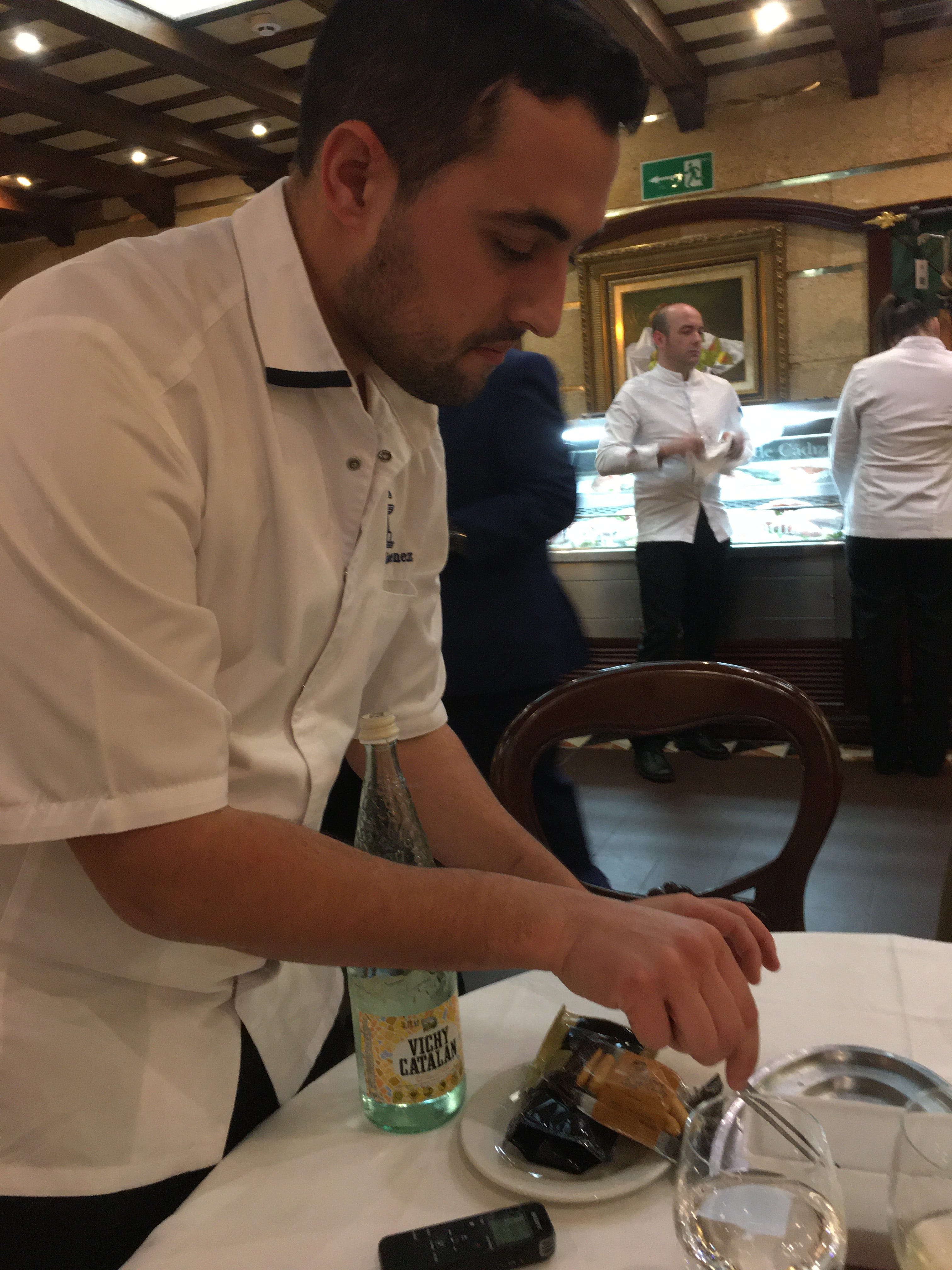
In Jimenez’s hands, even the pan con chocolate y aceite, a traditional Andalucian dessert made with dry bread and olive oil, incorporated garum; he’d made the chocolate ganache, which he topped with dewfish roe, using a special garum made from bluefin tuna. I was struck by how the garum, rather than overpowering the sweet and savory flavors, intensified and united them, playing much the same role that sautéed anchovies does in a puttanesca sauce. Unlike Barreiro, who used garum more as a condiment, to be added to finished dishes, Jiménez had incorporated it into the actual cooking process. The result was an unusual vividness. The addition of garum seemed to have subjected each dish to the culinary equivalent of italicization.
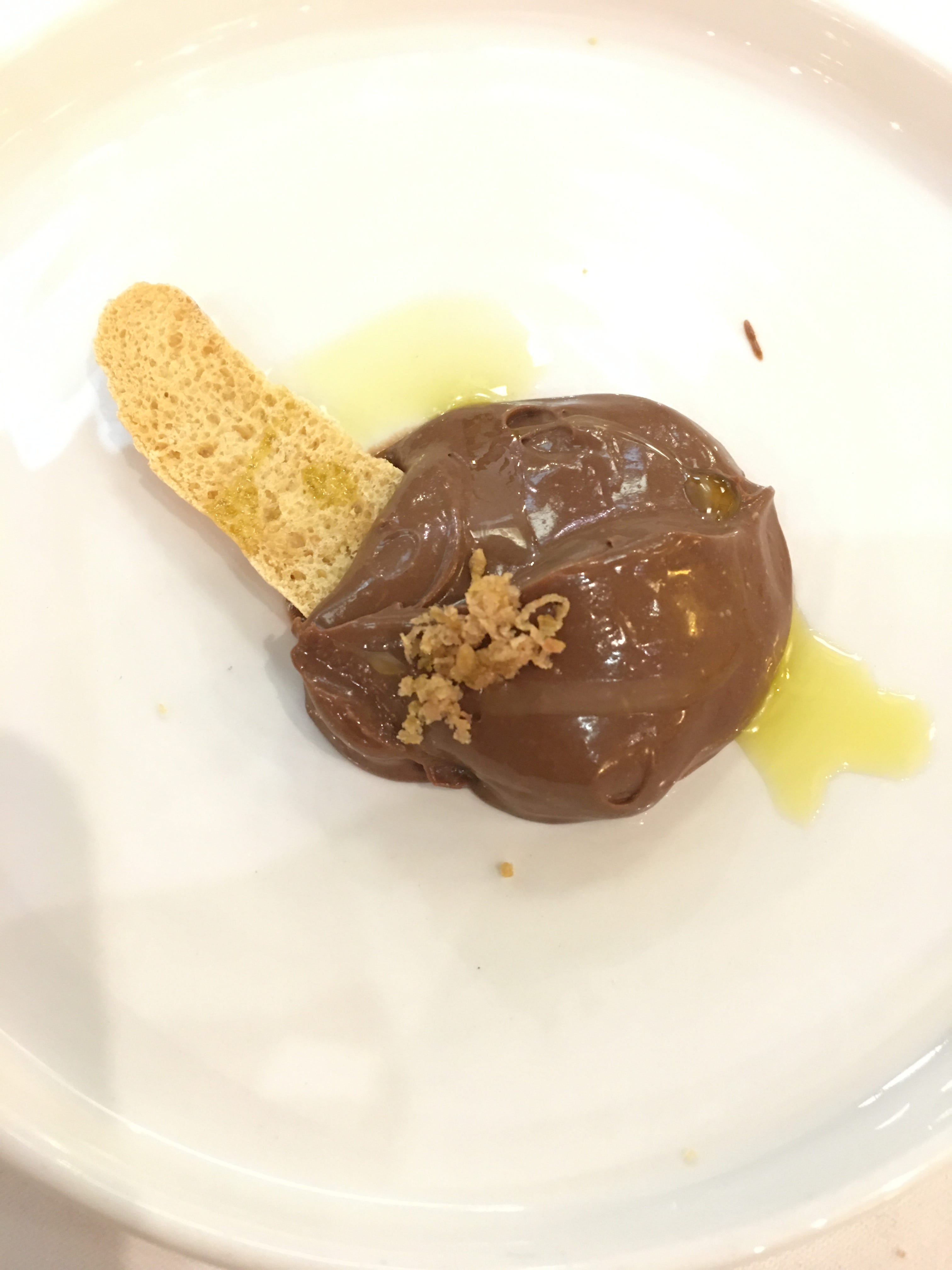
When I mentioned to Jiménez that the team at Copenhagen’s Noma had published a recipe for a garum made out of fermented crickets, he shuddered, as if scandalized by the enormities that the Nordics permitted themselves. But then he added:
“It’s not that hard to make garum, you know.” I followed him into the kitchen, and he led me to the walk-in fridge, where he pulled an oversized mason jar off a shelf. A label indicated that the salted anchovies within, which were still semi-solid, had been tranquilly putrefying for the last four years. (Later, when I made my own garum, I would discover that four years was definitely too long—four months fermentation is all that’s required.) He wasn’t about to serve it to his customers, but, once the fish had completely liquefied, he thought he’d give it a try.
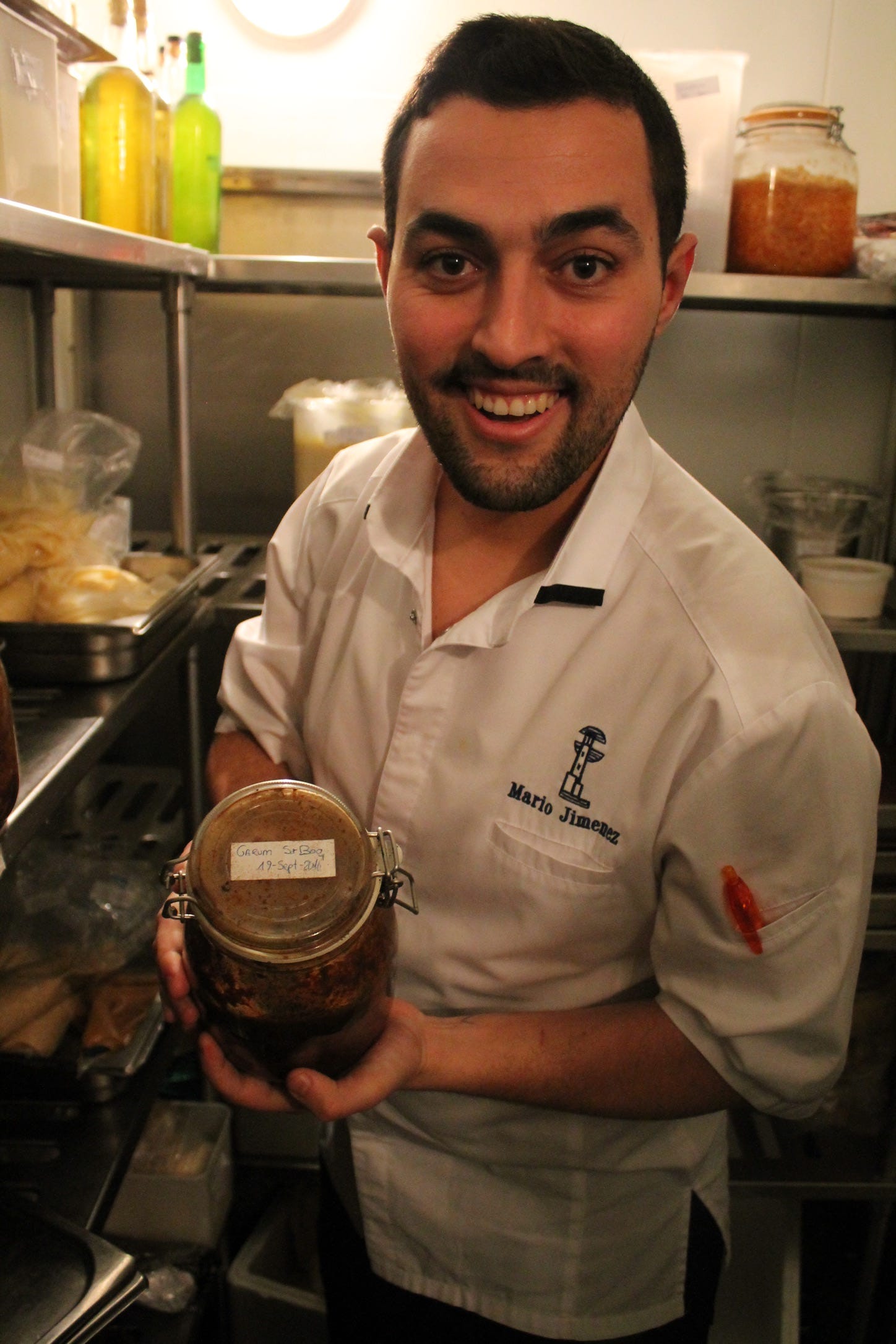
Jiménez was in a reflective mood as he accompanied me to the door. “You know, chefs today think they are very smart. But we are not even ten percent as smart as the Romans were two thousand years ago! We have Google, we have Wikipedia, we can look up recipes for kimchi foam and—cricket sauce. But here in Cádiz, we’ve always had the fish, the salt, the sun, the garum. It’s just that not enough people today have the personality to say, ‘I will stop here, and use the ingredients that we have here.’”
I loved the way the chefs in Cádiz had adapted garum to their own culinary styles, embracing an ingredient with such deep roots in the area—roots tied to the local resources of fresh fish and abundant sea salt. In the end, though, I discovered that Flor de Garum wasn’t the last word in recreations of garum. In the opinion of Sally Grainger, author of the authoritative Story of Garum, a much more authentic form of garum was being made by a team from Portugal. They worked with her closely, and managed to ferment haimation, the costliest form of garum, using tuna—something the Cádiz team had failed to do. When I met Grainger in Istanbul (more on that in a later post), she showed me the garum, made from sardines, that the team had named after her, in gratitude for her assistance. (I love the fact that Grainger doesn’t leave home with a stash of garum.) The latest news is that she will soon be back in Portugal, perfecting the garum in preparation for an official launch. Watch this space, I’ll keep you up to date for further developments in the ancient fish-sauce saga…
